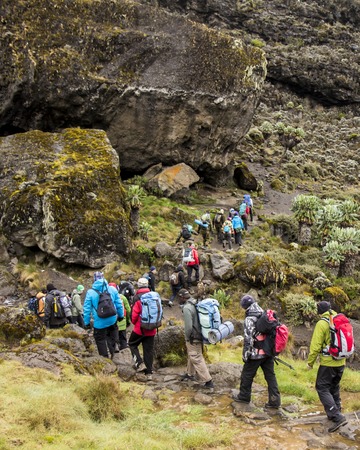1. Understanding Leave No Trace Principles
Exploring America’s wild places solo is an amazing adventure, but it comes with special responsibilities. As a solo hiker, you’re the only one making decisions out there, so understanding and following the Leave No Trace (LNT) principles is crucial—not just for yourself, but for everyone who enjoys the outdoors after you. In the U.S., protecting natural landscapes is part of our outdoor culture and heritage, and every hiker plays a role.
The Seven Leave No Trace Principles for Solo Hikers
| Principle | Solo Hiker Tips |
|---|---|
| Plan Ahead and Prepare | Research your route, check local regulations, carry maps, and pack for unexpected weather. Since you’re alone, tell someone your plan before heading out. |
| Travel and Camp on Durable Surfaces | Stick to marked trails and established campsites. Avoid creating new paths—one set of footprints can start a trend. |
| Dispose of Waste Properly | Pack out everything you bring in, including food scraps and hygiene products. Use “catholes” for human waste if necessary—200 feet from water sources is key. |
| Leave What You Find | Take only pictures. Don’t pick flowers or move rocks—small actions add up over time. |
| Minimize Campfire Impact | Use a camp stove instead of building fires whenever possible. If fires are allowed, keep them small and use established rings. |
| Respect Wildlife | Observe animals from a distance. Don’t feed them or leave crumbs—this keeps both you and wildlife safe. |
| Be Considerate of Other Visitors | Keep noise down, yield to other hikers, and respect everyone’s experience. Even when hiking alone, your actions impact others who come after you. |
Cultural Significance in American Wilderness
The Leave No Trace approach reflects core American values like stewardship, respect for nature, and freedom to explore wide-open spaces. When solo hiking, honoring these principles helps preserve the beauty and wildness of our public lands for future generations—and keeps the spirit of adventure alive for all.
2. Planning Ahead: Solo Safety and Environmental Impact
Heading out on a solo hike is both exciting and empowering, but it also means taking full responsibility for your own safety and the impact you have on nature. Solo hikers need to plan more carefully than group hikers, especially when it comes to following Leave No Trace principles. Here’s how you can prepare like a pro and minimize your footprint on America’s trails.
Unique Strategies for Route Research
Before you hit the trail, research is key. In the U.S., using websites like AllTrails, Gaia GPS, or local trail association pages helps you find up-to-date info about trail conditions, regulations, and any sensitive habitats along your route. Check if permits are required and note any seasonal restrictions that help protect wildlife or plant life.
Route Research Checklist
| Research Task | Why It Matters |
|---|---|
| Check official trail maps | Avoids getting lost and entering closed or protected areas |
| Review recent trip reports | Gives insight into current trail conditions and hazards |
| Note water sources & campsites | Helps plan low-impact stops and reduces disturbance to wildlife |
| Understand local regulations | Keeps you compliant with Leave No Trace and legal rules |
Selecting Gear for Minimal Impact
Your gear choices matter for both your safety and for protecting the environment. Solo hikers in the U.S. commonly use lightweight, compact gear to reduce their physical impact on the trail surface. For example, using a small tent or bivy sack keeps your campsite footprint tiny. Choosing reusable water bottles, bear-proof food containers, and biodegradable soap shows respect for nature and local wildlife.
Recommended Low-Impact Gear for Solo Hikers
| Gear Item | Sustainability Benefit |
|---|---|
| Lightweight backpacking stove | Avoids fire scars from campfires |
| Bearing canister or Ursack | Keeps animals wild by preventing food access |
| Trowel for cat holes | Makes responsible waste disposal easy anywhere on the trail |
| Reusable water filter or purifier bottle | Cuts down on single-use plastics and litter risk |
Weather Awareness: Staying Safe & Responsible Alone
The American wilderness is famous for fast-changing weather. As a solo hiker, monitor weather forecasts right up until departure—apps like NOAA Weather Radar or Mountain-Forecast are standard tools in the U.S. hiking community. Pack layers suitable for sudden temperature shifts and always be ready to turn back if conditions get risky; this not only protects you but also prevents unnecessary search-and-rescue operations that can harm sensitive environments.
Communication Standards in U.S. Solo Hiking Culture
Letting someone know your plans is a must when hiking alone in the States. Many solo hikers leave a trip itinerary with a friend or family member, including expected return time and route details. Some carry a personal locator beacon (PLB) or satellite messenger (like Garmin inReach), which allows check-ins even without cell service.
Common Communication Practices Table
| Practice | Purpose |
|---|---|
| Email or text trip plan to contact | Ensures someone knows where you are at all times |
| Cary PLB/satellite messenger | Adds safety net in remote areas with no cell coverage |
| Check-in on social media groups before/after hike | Keeps hiking community aware of your status |
Planning ahead as a solo hiker is all about thinking ahead—for yourself and for the environment. Taking these extra steps helps keep our wild places wild for everyone.

3. Minimizing Disturbance: Campsites, Cooking, and Waste
Choosing the Right Campsite
As a solo hiker, it’s easier to find a low-impact spot for your tent, but it’s still important to follow guidelines that protect nature and wildlife. Always select legal campsites—these are usually marked on maps or apps like Gaia GPS or AllTrails. If dispersed camping is allowed, choose a site at least 200 feet from lakes, streams, and trails. Avoid setting up camp in fragile areas such as meadows or places with delicate vegetation.
| Campsite Tip | Why It Matters |
|---|---|
| Camp on durable surfaces (like gravel or dry grass) | Prevents damage to plants and soil |
| Avoid expanding existing sites | Keeps impact limited to already disturbed areas |
| Stay away from animal trails | Reduces stress on local wildlife |
Managing Campfires Responsibly
Wildfire risk is real in much of the U.S., so always check current fire regulations before heading out. In many places, campfires are banned during dry seasons—carry a lightweight stove for cooking instead. If fires are allowed and you feel comfortable managing one alone, use established fire rings and keep your fire small. Burn only downed wood found on the ground; never cut living branches or trees.
Campfire Best Practices:
- Check local restrictions via state park websites or ranger stations.
- Keep water nearby to fully extinguish your fire.
- Never leave a fire unattended, even for a minute.
- Douse and stir ashes until cold before leaving camp.
Proper Human and Food Waste Disposal
Packing out what you pack in is even more important when hiking solo, since you’re the only one responsible for your impact. For human waste, use a portable toilet system if required by local rules (common in popular wilderness areas), or dig a “cathole” 6-8 inches deep at least 200 feet from water sources, campsites, and trails. Cover and disguise the hole when finished.
| Waste Type | Disposal Method | Extra Tips |
|---|---|---|
| Toilet Paper & Hygiene Items | Pack it out in a sealable bag | Avoid burying as animals may dig it up |
| Food Scraps & Trash | Packed out completely (no burning or burying) | Use odor-proof bags to deter animals |
| Dishes & Cookware Cleaning Water | Strain food bits and scatter “gray water” far from water sources | Use biodegradable soap sparingly if needed |
Respecting Wildlife While Hiking Alone
You’re less likely to disturb animals as a solo hiker, but it’s still crucial to respect their space. Observe wildlife from afar—use binoculars if you want a closer look. Never feed wild animals; this can make them sick and cause dangerous habituation behaviors. Store all food and scented items in bear-resistant containers if required (especially in places like the Sierra Nevada or Rockies). At night, keep your food secured at least 100 feet from where you sleep.
4. Respecting Other Trail Users and Local Communities
Understanding Private Land Boundaries
Many American trails pass through a patchwork of public and private lands. As a solo hiker, its your responsibility to know where you are and respect all posted signs. If you see “No Trespassing” or “Private Property” markers, always stay on the designated trail. Cutting corners or wandering off the path can damage relationships between landowners and the outdoor community. Use guidebooks, maps, or GPS apps like Gaia GPS or AllTrails to check property boundaries before your hike.
Trail Sharing Etiquette for Solo Hikers
Trails are shared spaces for hikers, runners, mountain bikers, and sometimes horseback riders. Following trail etiquette keeps everyone safe and fosters goodwill.
| Situation | What To Do |
|---|---|
| Passing Others | Say “On your left!” when overtaking; step aside for uphill hikers. |
| Bikes & Horses | Yield to horses (step off on downhill side), yield to bikes if hiking downhill. |
| Group Encounters | Let larger groups pass; as a solo hiker, it’s easier for you to step aside. |
| Noise Level | Keep voices low; use headphones instead of speakers for music. |
Navigating Small Towns and National Forests
Long-distance trails often pass through rural towns and national forests. Here’s how solo hikers can embody Leave No Trace values in these settings:
- Respect Local Culture: Dress modestly, support local businesses, and greet residents politely.
- Minimize Your Impact: Dispose of trash properly—even small items like food wrappers or fruit peels. Use restrooms in town rather than going outdoors near businesses or homes.
- Campsites: In national forests, camp only in established sites unless dispersed camping is allowed. Check with local ranger stations about current regulations.
- Be Discreet: Don’t spread out gear in public spaces like post offices, diners, or parks. Keep a low profile and avoid blocking sidewalks or entrances.
How Solo Hikers Set an Example
Your actions reflect on the entire hiking community. By being courteous to others and thoughtful about your impact in both wild places and small towns, you show that solo hikers take Leave No Trace seriously—helping keep trails open and welcoming for everyone.
5. Reflecting and Advocating: The Solo Hiker’s Responsibility
Leading by Example on the Trail
As a solo hiker, your actions speak louder than words. Practicing Leave No Trace (LNT) principles sets a visible standard for others. When you pick up litter, stay on marked trails, and respect wildlife, you quietly encourage others to follow suit. People often notice solo hikers’ behavior, making it even more important to demonstrate good habits. By modeling responsible outdoor ethics, you help create a culture of care for America’s wild places.
Reporting Environmental Concerns
If you spot issues like illegal campfires, vandalism, trail damage, or invasive species while hiking alone, take action by reporting them to the appropriate authorities. Many U.S. public lands have easy ways to share your concerns:
| Issue Observed | Who to Contact | How to Report |
|---|---|---|
| Trail Damage/Erosion | National Park Service (NPS), U.S. Forest Service (USFS) | Call visitor center or use online forms on park/forest websites |
| Litter or Dumping | Parks Department, Bureau of Land Management (BLM) | Email photos/details or use agency social media pages |
| Wildlife Disturbance | NPS Rangers, State Wildlife Agencies | Report in person at ranger station or via park hotlines |
| Illegal Activities (e.g., fires, off-trail vehicles) | NPS Law Enforcement, Local Police (for urgent cases) | Call emergency lines for immediate threats; otherwise use official reporting channels |
Promoting Leave No Trace Ethics Off the Trail
Your influence extends beyond your time outdoors. Sharing your experiences and knowledge helps spread LNT values throughout American hiking communities. Here are a few ways to advocate effectively:
- Social Media: Post about your LNT practices on Instagram, Facebook Groups like “Hiking in the USA,” or Reddit’s r/CampingandHiking.
- Local Meetups and Clubs: Join organizations such as the American Hiking Society or local Sierra Club chapters to discuss and promote responsible hiking.
- Gear Shops & Workshops: Participate in REI classes or community events where you can share best practices with new hikers.
- Youth & Scout Programs: Volunteer to teach LNT to kids and teens through programs like Scouts BSA or local school outings.
The Ripple Effect of Advocacy
Your small acts—sharing a tip online, reporting an issue, or picking up trash—can inspire countless others. Solo hikers play a crucial role in protecting America’s trails and wild spaces for future generations. By reflecting on your impact and actively promoting Leave No Trace, you become a steward not just for yourself, but for the entire outdoor community.


